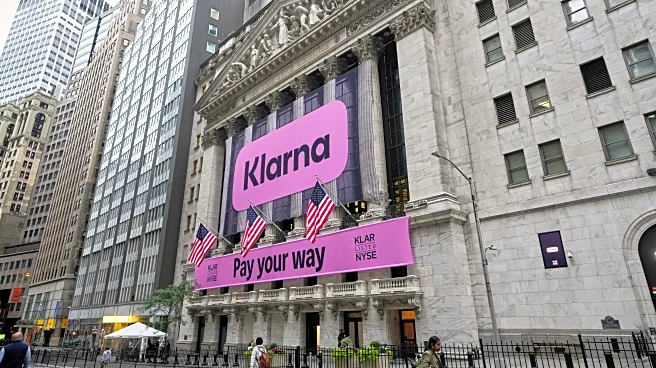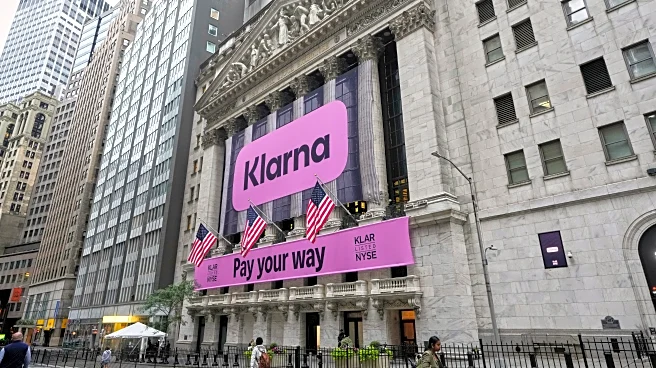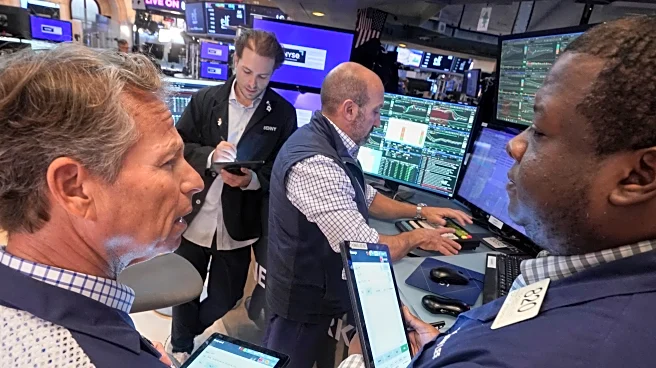What is the story about?
What's Happening?
Klarna, a prominent fintech company, successfully launched its IPO on the New York Stock Exchange, raising $1.4 billion. The IPO saw shares priced at $40, above the anticipated range, and opened at $52 before stabilizing at $46. Of the 34.3 million shares sold, only 5 million were directly from Klarna, with the majority sold by existing investors, including Sequoia Capital, which holds nearly 23% of the company. Klarna's co-founder and CEO, Sebastian Siemiatkowski, retained his shares, while other co-founders sold portions of their stakes. The IPO is a testament to Klarna's growth from a startup to a major player in the fintech industry, despite previous challenges.
Why It's Important?
Klarna's IPO is significant for the fintech sector, demonstrating the potential for substantial growth and investment in alternative financial services. The involvement of major investors like Sequoia Capital highlights the confidence in Klarna's business model and future prospects. The IPO also reflects a broader trend of fintech companies seeking public listings to access capital for expansion. Klarna's success may inspire other fintech firms to consider IPOs, potentially increasing competition and innovation in the financial services industry. The company's focus on facilitating smooth payment experiences rather than traditional lending could influence consumer behavior and industry standards.
What's Next?
Post-IPO, Klarna is expected to focus on expanding its market presence and enhancing its service offerings. The company aims to leverage the funds raised to fuel growth and address profitability challenges, particularly in the U.S. market. Investors will be watching Klarna's performance closely, assessing its ability to navigate economic fluctuations and maintain its competitive edge. The IPO may also prompt strategic moves from competitors and traditional financial institutions seeking to adapt to changing consumer preferences. Klarna's future developments could have implications for the broader fintech landscape and the evolution of payment solutions.
AI Generated Content
Do you find this article useful?
















